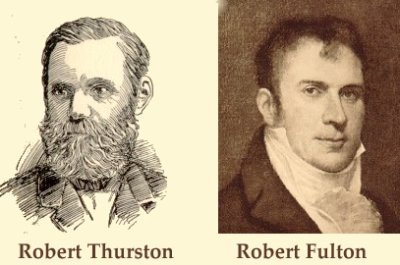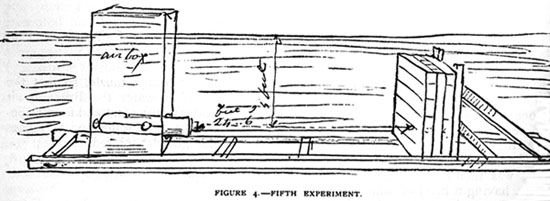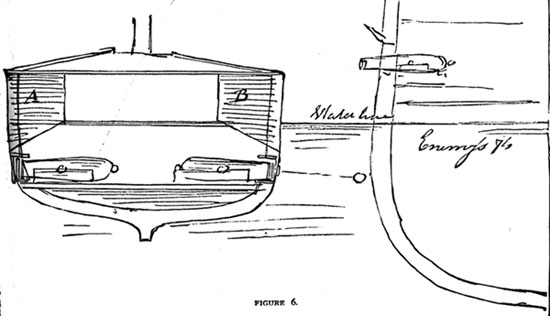Thurston and Fulton
Today, Thurston looks at Fulton. The University of Houston's College of Engineering presents this series about the machines that make our civilization run, and the people whose ingenuity created them.
They called Fulton's steamboat Fulton's Folly until he made such a success of it. Well, I've just opened an 1881 Scribner's Monthlymagazine and found another folly of Fulton's. The article is by Robert Thurston. Thurston, born in 1839, went on to become a great 19th-century engineer. He consulted, invented, wrote, and taught. The year before he wrote this article, he helped to found the American Society of Mechanical Engineers. Four years after, he moved from Stevens Institute to Cornell, where he set up what would be, for a while, America's leading engineering school.
In this article Thurston presents an 1813 letter from Fulton to Jefferson. That was during the War of 1812 and Fulton was looking to sell steamboats to the Navy. His letter and sketches describe seven experiments. He's been firing cannon at heavy wood planks under water.
Fulton gradually increased the size of the cannon, and he varied the distance between the cannon and the wood. He concluded that, with the right cannon and powder charge he could penetrate a 74-gun British ship-of-the-line from a distance of around ten feet.
Now Fulton tells Jefferson that, for the cost of two million dollars, he can build a fleet of twenty extraordinary steam vessels that will give America complete control of her shores.
These are to be small boats, very low in the water, with sealed cannon ports below the surface. They're meant to steam up alongside British ships and shoot holes in their hulls. For protection, they have only smooth roofs of very thick wood, sloped at twenty-five degrees to thwart landing parties.
In typical Fulton fashion, he ends his letter saying: "... any attempt to fire any kind of ordnance under water in attacks on vessels of war or maritime combat will be considered a violation of my right and purvey of my invention." Pretty sweeping claim there: One would hardly grant Fulton right to the much later invention of, say, the self-propelled torpedo.
Thurston prefaces Fulton's actual letter with an assessment of Fulton himself. He says that we all know Fulton didn't invent the steam boat, that he was more a promoter than inventor, that he was very good at assembling the ideas of others. But then he praises Fulton's extraordinary energy and enterprise. Fulton made things happen, and that's characteristic of a good engineer.

So what became of Fulton's proposal? Thurston says us he received a "favorable reply" from Jefferson. I suspect that Jefferson (himself a better engineer than most) politely disposed of Fulton's dubious plan. Nevertheless, the Navy engaged Fulton a year later to build its first steam warship. Fulton died of flu in 1815, before the ship was finished. And it went on to serve in peacetime. Like Fulton's imagined subsurface gunboats, it never had to be tested in actual combat.
I'm John Lienhard, at the University of Houston, where we're interested in the way inventive minds work.
R. H. Thurston, Robert Fulton's Experiments in Submarine Gunnery. Scribner's Monthly, An Illustrated Magazine for the People, Vol. XXII, May 1881 to Oct. !881. pp. 563-570. Both of Fulton's sketches below are from this source.
Click here for more on Thurston, ASME, and early engineering education

